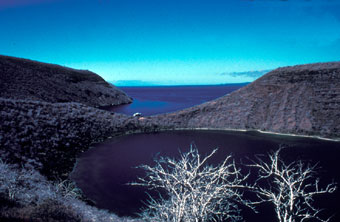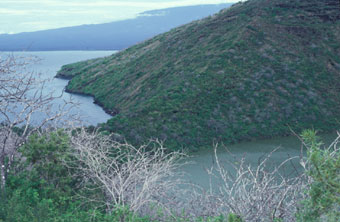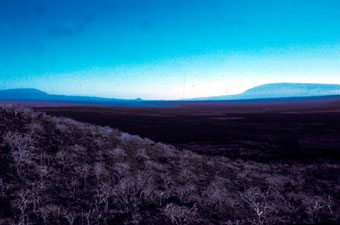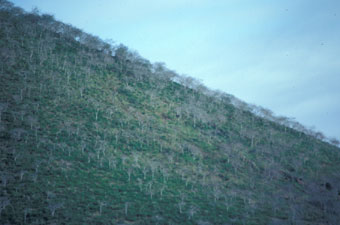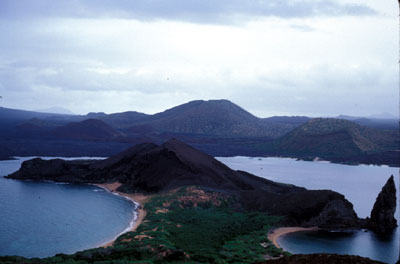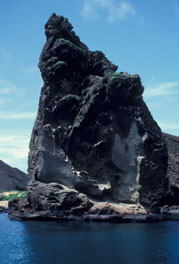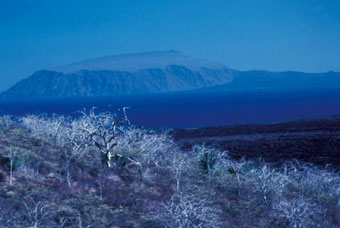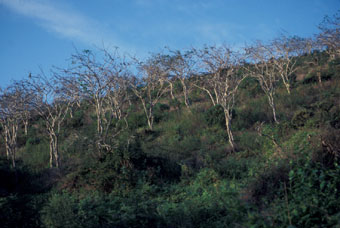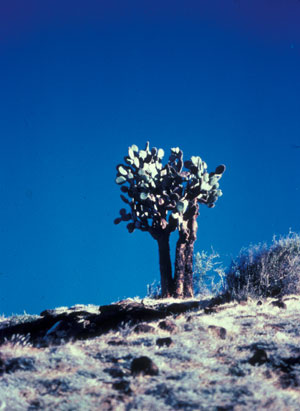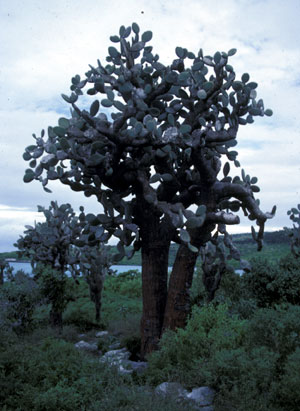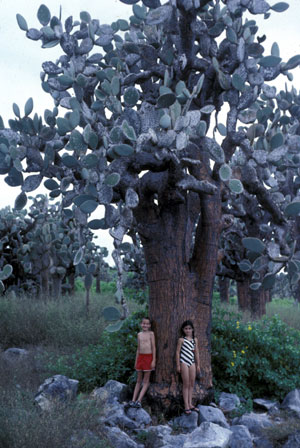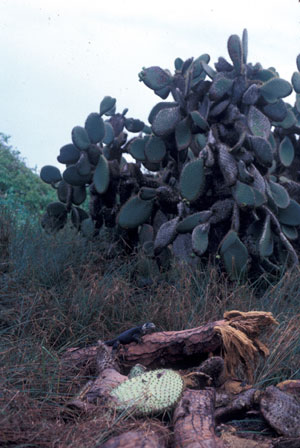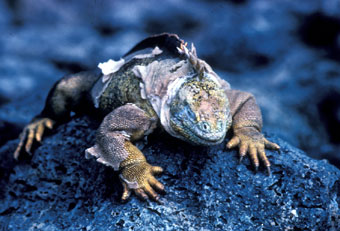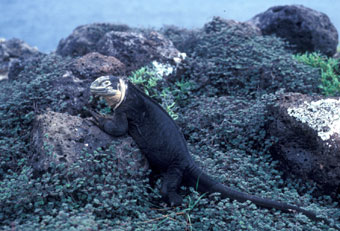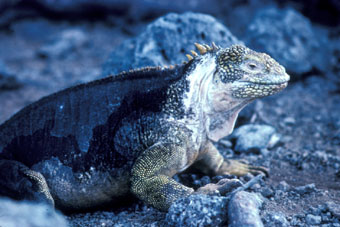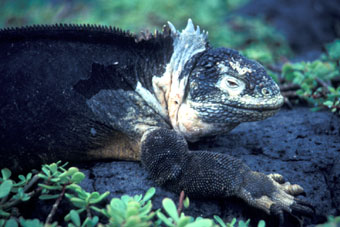Fat land iguanas were common on Plazas Island in the summer of 1983 toward the end of the '82/'83 El Niño.
The Galapagos land tortoise is giant in the world of tortoises as you can see above. (GA image)
Dome shelled tortoises are common on many Galapagos islands (left) and are vegetatarians, feeding on plants and plant roots (right). (GA images)
Galapagos tortoises are normally relatively easy to see in Galapagos during normal years (Halbach image left) but during the severe El Niño of '82/'83 they were extremely hard to find as the vegetation covered them (right). (GA image right)
|
Galapagos is named for its giant land tortoises (Geochelone elephantopus). Many of the Galapagos Islands have their own type of giant land tortoise. The different types have varied shell shapes. Tortoises from wetter islands have dome-shaped shells and feed close to the ground. Tortoises from the drier islands have a raised front, (called saddleback shells), so that their necks can reach higher for the vegetation that they eat. During El Niño the giant tortoises were nearly impossible to see because of all the undergrowth.
|
A saddleback Galapagos tortoise has its shell raised behind its neck, allowing it to reach vegetation further off the ground than its dome-shelled relatives. (GA image)
|
Tortoises were removed by the thousands when pirates and whalers visited Galapagos during the 1500s - 1800s. These tortoises were packed in the holds of the boats, upside down, and kept there as a source of fresh meat for up to a year during the 1700s and 1800s. Some of the different types of tortoises are extinct now because of this and over-collecting by humans for zoos. Without native peoples in the Galapagos the plants and animals there had been undisturbed until their discovery in the 1500s. In the 1500s to 1800s there were few visits by humans except for occasional stops for food and water by pirates and whalers. The first settlements did not begin until around 1832.
|
Darwin's finches show remarkable variations between species. (SA images)
|
Seed eating finches exhibited remarkable population increases during the '82/'83 El Niño. Darwin's finches are famous in the Galapagos as being one of the species that got Charles Darwin thinking about his Natural Selection and Evolution ideas in the mid 1800s during his voyage around the world. These are primarily seed eating birds. There are several species of Darwin's finches, generally they are referred to as six species of ground finches (Geospiza spp.), three species of tree finches (Camarhynchus spp.), one species of warbler finch (Certhidea olivacea), a vegetarian tree finch (Platyspiza crassirostris), a woodpecker finch (Cactospiza pallidus) and a mangrove finch (Cactospiza heliobates). The increased rainfall in severe El Niños not only causes the vegetation to grow more but seed plants generally make more seeds. Many of the finches had so much to eat during '82/'83 that they nested several times and produced 2-7 times the normal number of offspring. The population explosion was short-lived when normal conditions returned and many birds starved. But, during the El Niño it was definitely a remarkable event.
|

(Revised 18 December 2004) |    |
|


